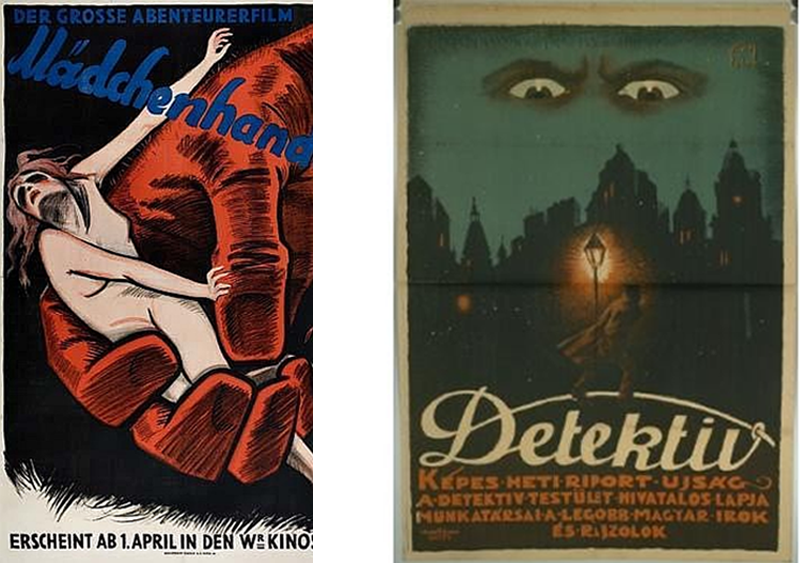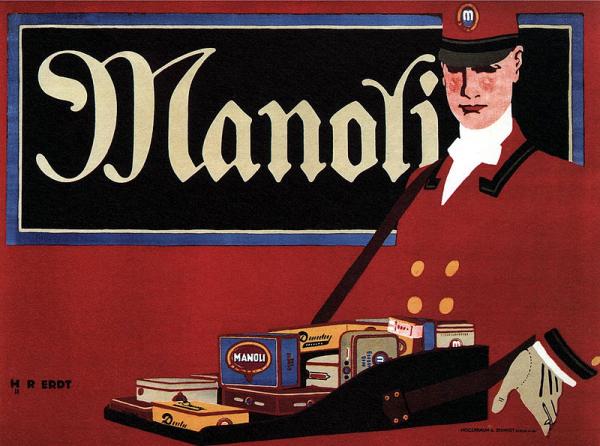In 2023, representatives from the Reinhold-Brown gallery reached out to LACMA curators with an appealing offer: to donate more than 40 posters from the significant collection of Julius Paul to the museum’s Rifkind Center for German Expressionist Studies.
Julius Paul, (1867–1938) born in Temesvár, Hungary (today Timișoara, Romania), and based in Vienna, was a new type of collector. He sought out posters, a relatively new format that had exploded in popularity around the turn of the 20th century. Displayed throughout cities like Berlin and Vienna on cylindrical posts called Litfaßsäule, posters were first used for advertising, then as tools for propaganda during World War I. Their bright colors, punchy texts, and simplified graphics were designed to grab the attention of passersby, who typically encountered them on the street or in public spaces in a state of distraction.

Paul and another contemporary, the German Hans Sachs, found these ephemeral graphics worth saving and celebrating. They recognized the poster as a distinctly modern art form designed to appeal to the masses. Sachs—a dentist by profession and an amateur scholar whose poster collection numbered more than 12,000 examples—founded a group known as the Verein der Plakatfreunde (Society for Friends of the Poster) and started a publication, Das Plakat (The Poster), dedicated to trends in poster design. (Read more about LACMA’s collection of issues of Das Plakat.)
A distributor of cigarette rolling papers by profession, Paul joined the Society for Friends of the Poster and steadily built his collection, ultimately compiling more than 6,000 examples. The Paul posters represent an important cross-section of poster design in the first decades of the 20th century; they advertise goods, services, and ideas typical of the period promoting travel, art exhibitions, entertainment, films, consumer products, and political campaigns and slogans. They also present a range of styles and developments representative of these decades and countries, from French Art Nouveau to the Sachplakat (object poster) popular in Germany to political graphics aligned with a developing Socialist Realist aesthetic. The gift includes works by both widely recognized poster artists such as Mihály Biró, Hans Rudi Erdt, and Victor Theodor Slama, as well as a number of lesser known or unknown makers.

Paul died in March 1938, and his poster collection passed to his nephew, Gaston Belf. Nazi Germany annexed Austria only two months later, an event known as the Anschluss. Both Paul and Belf were Jewish; Belf fled the country with his wife and soon after the posters he had inherited appeared for sale at V.A. Heck, a bookseller based in Vienna. We do not know whether Belf “voluntarily” consigned his collection with Heck to fund his escape or if he abandoned the posters when he fled; we do know that the collection was acquired from Heck for a very low price by the Albertina Museum in 1939, initially comprising half of the museum’s total graphic design collection. The collection remained there until 2008, when the Austrian Commission for Provenance Research determined that the posters had been sold under duress. The collection was restituted to Belf’s heirs (Belf died in 2002) who have since sold and redistributed the collection through the Reinhold-Brown Gallery to museums and private collectors. Parts of it have gone to institutions including the Museum of Fine Arts, Boston; the Museum of Modern Art; the Neue Galerie, New York; the Hungarian National Gallery; and the Academy Museum of Motion Picture Arts and Sciences.
For more information on the similarly troubled fate of Hans Sachs’s poster collection, see Kathleen Chapman’s “Hans Sachs: The Most Dedicated Collector of Posters in Germany” in Collecting Prints, Posters, and Ephemera: Perspectives in a Global World (London: Bloomsbury, 2020).



